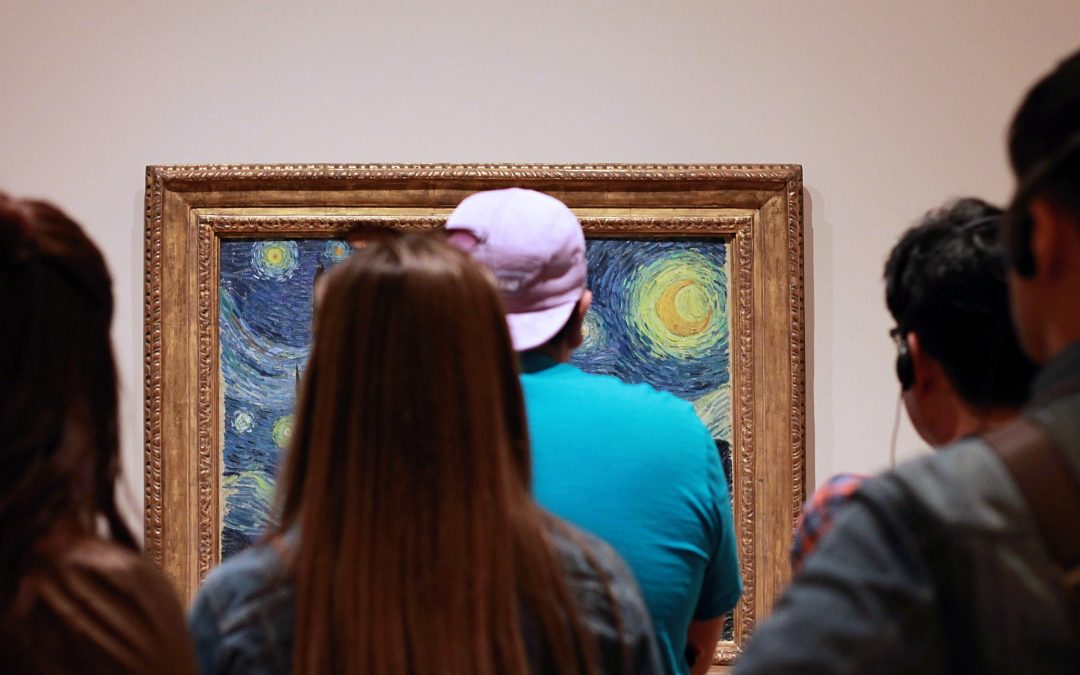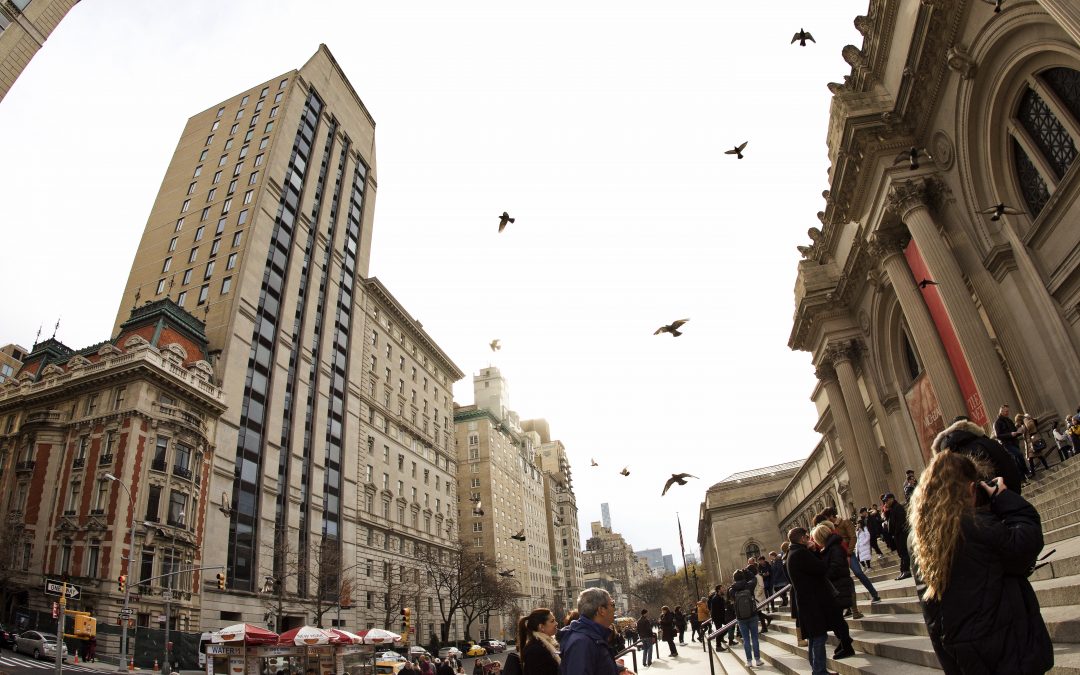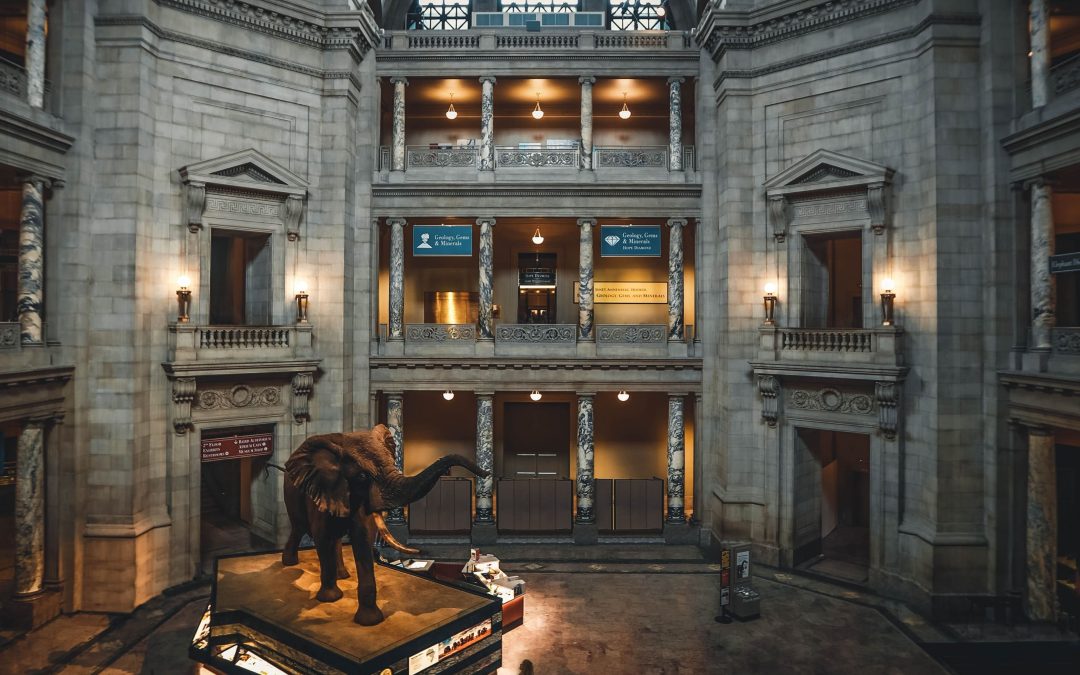
by BCB Property Management | Sep 7, 2016 | History, New York City
Every landmark has its secrets, and with one as rich as New York City’s Museum of Modern Art, the stories are almost certainly boundless. While the MoMA’s greatest secrets might always be just that — secret — we’ve rounded up some incredibly obscure and interesting facts about the museum. These tidbits of knowledge, while mostly limited to the minds of curators and tour guides, can help the everyday museum-goer understand the space with new context.
Here are six surprising facts of the Museum of Modern Art that you’d probably never guess at first glance, and how tuning in can enhance your experience.
1. John D. Rockefeller loathed modern art, but the museum was largely founded by his wife Abby.
Rockefeller’s wife Abby Aldrich Rockefeller was largely responsible for the founding of the Museum of Modern Art. You’d think that being the wife of a famously rich man, the job would be an easy one. On the contrary, her husband hated modern art, meaning Abby had to raise the funds without his help.
2. The MoMA is a microcosm of Manhattan itself.
The MoMA has had several homes and various expansions since its opening on 53rd street in 1939. The museum acquired more and more real estate over the years, and in 2002 expanded even further, retaining at its heart its pivotal sculpture garden. What many don’t realize is that the museum reflects the city as a whole.
“The model for MoMA is Manhattan itself,” architect Yoshio Taniguchi told New York magazine for a feature by Alexandra Lang. “The Sculpture Garden is Central Park, and around it is a city with buildings of various functions and purpose. MoMA is a microcosm of Manhattan.”
3. Two of Monet’s “Water Lilies” paintings were destroyed by fire.
One of the MoMA’s most iconic paintings is “Water Lilies” by Monet, positioned in front of a bench for relaxation and contemplation — as was the intent of the painter, who created them while suffering from cataracts as a “refuge of a peaceful meditation.” They were dismissed for many years as the product of a man past his prime.
Then, in 1958, a fire disrupted the art’s tranquility in the museum and destroyed two of the “Water Lilies” painting. The imminently popular triptych on display now was purchased as a replacement from Monet’s son.
4. Before landing at the MoMA, a taxidermied bald eagle caused a host of legal problems.
America’s bald eagle, while a striking symbol, is one not normally physically included in art — largely because it’s a protected species. So when Robert Rauschenberg put a taxidermied eagle in his 1959 masterpiece “Canyon,” it’s fate was relegated to limbo for a while because it was illegal to sell, despite its valuation of $65 million.
The feds agreed to drop the matter so long as “Canyon” be sold where it could be publicly displayed, which is how the work found its home at the MoMa.
5. One artwork, a fur-covered mug, was snuck in years before it was approved
Among the fifth floor painting and sculpture galleries is a fur-covered cup and saucer called Object by Meret Oppenheim. The idea was conceived by the artist while at lunch with Pablo Picasso, who remarked that fur could be put on anything.
This installation has a peculiar history: after debuting in Paris, it was purchased by the MoMA’s director for $50 of his own money in 1936, even though the trustees disagreed with its inclusion. Ten years later the trustees changed their tune; unbeknownst to many it had been in the museum all along labeled as an “extended loan.” Said chief curator Ann Tempkin for TimeOut NY, “It’s one of the great stars of our Surrealism collection; to think that our director had to sneak it in!”
6. A long-term exhibit in MoMA PS1 can only be seen through a floorboard.
The MoMa also has a branch in Queens called PS1, home to more abstract works of art, dubbed “contemporary.” The art of the contemporary is that it’s sometimes easy to mistake for non-art, and often difficult to grasp in meaning.
Some of these hidden gems, like “Selbstlos im Lavabad (Selfless in the Bath of Lava)” by Pipilotti Rist. Peek through a hole in the lobby floor to view the video, which presents the artist crying “I am a worm and you are a flower!” as she swims nude in an incandescent lava bath. Easy to miss, impossible to forget.
7. You can watch videos privately in the media lounge.
On the second floor of the MoMA, there’s a space where you can enjoy art in privacy if you aren’t up to walking among crowds. It’s a media lounge in which visitors can choose from the museum’s extensive video collection to view artwork on their own or with a small group.
The Media Lounge is also a piece of art in and of itself. Designed by artist Renée Green, the installation consists of colorful, expandable walls that can be shifted to create a viewing environment that fits the audience.
8. The only “free” work in the museum is the @ symbol
One of the most peculiar acquisitions in recent history by the MoMA is the @ symbol, a design both ubiquitous and singular, free and priceless. The symbol is public and dates back to the sixth or seventh century, though Ray Tomlinson chose the symbol for the first e-mail, imbuing it with new meaning and creating a symbol of the computer age.
Says the MoMA website, “We have acquired the design act in itself and as we will feature it in different typefaces, we will note each time the specific typeface as if we were indicating the materials that a physical object is made of.” Notes senior curator Paula Antonelli for TimeOut NY, “[The one] we show in the museum is silk-screened on the wall in American Typewriter font. You should think of it as a shadow of the design.”

by BCB Property Management | May 20, 2016 | History, New York City
The Metropolitan Museum of Art, known colloquially as the Met, is the largest art museum in the United States and one of the most visited in the world. With a permanent collection of over two million art works, the nearly century and a half-old museum’s secrets are as rich as its history.
The best way to learn about the Met is to visit and take a tour. Tour guides spend day in and day out exploring and touring the majestic space, understanding its evolution, and become acquainted with the timeless objects curated with care throughout its many galleries.
Here are 14 amazing and surprising facts about the Metropolitan Museum of Art straight from the individuals that know it best: New York City’s tour guide experts.
1. The Met is the brainchild of a Founding Father’s grandson, and many other prominent New York figures.
According to @Discovering_NYC, a writer, historian and NYC tour guide popular on Twitter, the idea for the Met came from John Jay, the grandson of lesser-known Founding Father, also named John Jay.
In 1869, a committee of 300 met in 1869 to organize the museum, including many prominent New Yorkers involved with its creation: Andrew Haswell Green, John La Farge, James Lenox, Frederick Law Olmsted, Alexander Stewart and Rutherfurd Stuyvesant, to name a few.
2. The Met was not always located in Central Park.
The Met’s first location was in the Dodworth building at 681 5th Avenue, a simple brownstone building, then in a mansion at 128 W 14th street. The Central Park location was secured in 1969 thanks to cooperation from the Central Park Commissioners (many of whom were involved with the Museum) and opened in 1880.
3. The original red Gothic building is still visible if you to know where to look.
The original red Gothic building was designed by Calvert Vaux and Jacob Wrey Mould. It still stands, and one great view is from the European Sculpture Court, according to Discovering_NYC.
Since the Met expanded outward, the building can be seen at its center, which is called Medieval Court. “The Met is like a giant onion; they just keep building more stuff onto it,” says Museum Hack, a leading provider of fun, unconventional tours at the Met and other museums. The 1880 building is totally encased, and the best places to spot it is in the Petrie Court Sculpture Gallery and the Lehman Wing.
4. Since the first collection opened, objects have risen in number from less than 200 to 2 million. That’s an average of over 13,000 new artworks every year.
The first collection opened on February 20th, 1872, before the Met had its permanent home, including just 174 paintings and a few sculptures. Now, it contains two million objects celebrating mankind’s artistic endeavors spanning a quarter of a mile and 20 buildings.
5. The Museum’s front facade has been incomplete for over a century.
One of the numerous additions to the original building, the magnificent facade facing 5th Avenue was built in 1895, designed by Richard Morris Hunt, one of the founders of the American Institute of Architects. Hunt’s design included four columns supporting allegorical statues of architecture, sculpture, music and painting, but they were never finished because the funds didn’t allow for it. (Discovering_NYC).
6. The Met includes a beautiful uptown complex called The Cloisters.
Not everyone knows that there is more to the Met than its on-site art collections. Situated in Fort Tryon Park, the complex includes five Medieval cloisters and an incredible collection of Medieval art. John D. Rockefeller bought the collection for the Met, and also purchased land on the side of the Palisades to preserve the magnificent view. (Discovering_NYC)
7. The best bathrooms are in Gallery 207, not the Egyptian Wing.
According to Museum Hack’s insider knowledge, the bathrooms in the Egyptian Wing can be “packed and smelly.” To avoid this, take the Grand Staircase and high-tail it to Asian Art, where the Gallery 207 bathrooms are impressive, crowd-free and nice-smelling.
8. Use the 81st street entrance for shorter lines, pre-admission bathrooms, and your own private gift shop.
The main entrance on 82nd Street can be a madhouse, with long waits for coat check and admission. But if you simply stroll down to 81st and use the Uris Center for Education Entrance, Museum Hack attests, there will be shorter lines, a separate coat-check, pre-admission bathrooms and a private gift shop.
9. With over six million visitors each year, it is always crowded — but there are a few quiet spots.
Though the museum is almost always full of people, there are some somewhat secluded galleries if one is seeking a contemplative spot, says NYC Licensed Sightseeing Guide Robin Garr says, who also works for the private tour group The Levys’ Unique New York.
These include the Astor Chinese Garden Court, where you’ll find a replica of a Ming Dynasty garden from Suzhou (2nd floor, Asian Art galleries); the Henry R. Luce Center for the Study of American Art featuring 10,000 American decorative and fine art objects in open storage cases (2nd floor of American Wing); and the 20 historic-period rooms in the American Wing.
10. The Met holds the largest collections of arms and armor in the Western Hemisphere.
Created within the museum in 1912, the collection comprises roughly 14,000 objects, of which more than 5,000 are European, 2,000 are from the Near East, and 4,000 from the Far East.
The first curator of the Arms and Armor department was, rather fittingly, a man named Helmut Nickel, Robin Garr says.
11. The museum’s first accessioned object was a Roman sarcophagus, currently on display in the Greek and Roman Galleries.
A sarcophagus, which means “flesh-eater” in Greek, is an ancient Roman burial practice and art form by which elaborate designs are carved into limestone and marble containers. The Met’s Roman sarcophagus was a gift from J. Abdo Debbas, the American vice-consul at Tarsus (Southern Turkey) in 1870. It remains a centerpiece of the galleries of Greek and Roman art, says Garr.
12. The Met’s Egyptian collection holds the largest collection of Egyptian art outside of Cairo, and the oldest items in the museum.
Mostly from private collectors, the Met is home to over 26,000 pieces of Egyptian art from the Paleolithic era to the Roman era, second only to Cairo in quantity. The oldest items in the museum are a set of Acheulean flints in this collection, which date from the Lower Paleolithic period — between 300,000 and 75,00 BC!
Notable artworks also include the Temple of Dendur, a stunning Egyptian temple built by the Roman governor Petronius in 15 AD. A gift from Egypt to the USA in 1965, the temple is illuminated in a sky-lit room with a pool meant to evoke the Nile river. (Robin Garr)
13. There is a resident florist at the Met that arranges humongous floral displays.
You may see some beautiful floral arrangements during your visit to the met. According to Garr, the floral displays in the Great Hall niches were permanently endowed by Lila Acheson Wallace (co-founder and co-chairman of Reader’s Digest).
There is also a resident florist for the Met: “Floral Curator” Remco van Vliet is a third generation master Dutch florist. Floral arrangements are comprised of fresh, seasonal vegetation and can be as tall as ten to twelve feet.
14. You can’t see the Met in one visit.
At two million square feet, it’s impossible to see everything the Met has to offer in just one day. Many visitors make the mistake of winging it only to miss the best parts because they didn’t plan properly.
Robin Garr suggests that visitors pick a few favorite objects, two periods of art, or two geographical/cultural areas they would like to see. Prioritize the ones that are most important, but don’t spread yourself too thin or you’ll be unlikely to enjoy the experience.
If it wasn’t already clear that they know the Met inside out, it goes without saying that a knowledgeable guide can help you make the most of your day or days at the Met, and share even more pearls of wisdom along the way.
Check out Discovering_NYC, Museum Hacks, Robin Garr and The Levys’ Unique New York for more of insight likely to escape regular visitors.
Featured image: Steven Pisano via Flickr

by BCB Property Management | May 11, 2016 | History, New York City
For about a decade, plans have been in the works to build a skyscraper adjacent to the Museum of Modern Art in Manhattan. Construction began in 2015 for the 1,050-foot tower, which will add to New York City’s skyline a two-peaked, 82-floor skyscraper designed by renowned architect Jean Nouvel.
The project, first called the MoMa Expansion Tower, Tower Verre and ultimately 53W53, will be the latest transformation to the area literally built upon the MoMA’s place and history in New York City. The 17,000-foot lot was sold by the MoMa to the real estate company Hines in 2007, and will be nearly the size of the Empire State Building.
Birth of a museum
Though 53 West 53rd will soon be topped by a graceful and angular monolith, the lot would have been virtually unrecognizable at the time of the MoMA’s first occupancy on the block in 1939. (Though opened in 1929, the MoMA tested various locations before settling where it remains today.)
Still, the property was impressive for the time, designed in the “International Style” by modernist architects Philip L Goodwin and Edward Durell Stone. The multi-departmental structure devoted floors upon floors to various forms of modern art, adding departments for architecture and design, film and video, and photography to its existing collections of paintings, sculptures, drawings, and illustrated books.
The property underwent several renovations in the 50s and 60s; in 1958, a second-floor fire caused by smoking construction workers destroyed an 18-foot long Monet painting of water lilies, among other works.
Bold changes
The MoMA has undergone various expansions leading up to its latest vertical endeavor. In 1983 it doubled its gallery space and increased curation space by 30 percent, adding an auditorium, two restaurants, and a bookstore.
In 1997, Japanese architect Yoshio Taniguchi won the honor of redesigning the space: the project, completed in 2004, doubled the space with an additional 630,000 feet of space, expanding the scope of its educational and research abilities. Taniguchi’s renovation was overall considered a fine example of contemporary architecture.
Now, with the addition of 53W53, the MoMA will be changing its face once more. After acquiring the American Folk Art Museum, MoMA unveiled new plans by Diller Scofidio + Renfro to transform the space into a MoMA addition instead of demolishing it. The renovation will include a retractable glass wall, new gallery space, and free access to the first floor, including the sculpture garden.
This latest facelift coincides with the continued construction of 53W53; it will add 15,500 feet of space in the former Folk Art Museum, plus 39,000 in the new tower. Along with gallery space, the visually impressive skyscraper will include apartments of various sizes and hotel rooms.
It is expected to be completed by 2018.

by BCB Property Management | Mar 15, 2016 | History, New York City, Uncategorized
One of the largest museums in the world is about to get larger and a lot more surreal. The American Museum of Natural History, situated across the street from Central Park in New York City’s Upper East Side, has plans to add a new wing to its already impressive 27-building facility.
The design, described as “part Dr. Seuss, part Jurassic Park” by the New York Times, comes from the imagination of architect Jeanne Gang, who won a competition for the honor. Gang, founder of the Chicago firm Studio Gang Architects, offers a unique vision for the building, expected to open in 2019 in celebration of the museum’s 150th anniversary.
At once futuristic and historic, the design concept mimics the structure of natural caves and glacial formations to create towering halls and circulatory pathways within a wondrous, abstract building. The design is at home with the museum in subject matter of magnificent creatures, science, and peoples of the past, but diverges in regards to structure, which is more reminiscent of a theme park than a traditional museum.
The theatrical quality of the design may be the perfect direction for the famed museum. With half a million school-children visited yearly and thousands of teachers trained, the fantastical form reinforces the museum’s its reputation as a fun and educational destination for people of all ages. The imagination it encompasses could spur in today’s youth scientific interest and curiosities to last a lifetime, ultimately shaping the future of the sciences.
150 years in the making
It has taken nearly a century and a half of growth and development for the American Museum of Natural History to reach this point. Established in 1869, the museum was first housed in Central Park’s Arsenal Building before today’s facility began construction. The museum’s founding realized the dreams of naturalist and student of zoology Dr. Albert S. Bickmore, who lobbied tirelessly for a natural history museum.
The first building was constructed in 1874 and opened in 1877, after which more were added over the course of many decades. With architecture ranging from Victorian Gothic to neo-Romanesque and Beaux-arts, the museum is a magnificent hodgepodge of science and history outside-in.
The museum’s many buildings were built and connected over time, and not always with rhyme or reason. One of the purposes of the new expansion will be to add additional connections between levels across buildings to alleviate confusion and congestion.
Little has been added to the museum’s exterior since the 1930s, though in 2009 its south front was cleaned, repaired, and renovated, and in 2012 the North Hall of Mammals was refurbished.
The upcoming addition will add to the museum’s facade a contemporary, silvery exterior made of stone and glass, in stark contrast to the red brick of its neighbors.
Dissent and cooperation
Not everyone was initially keen on the expansion, as it will encroach (however slightly) upon the beloved and historic Teddy Roosevelt Park. After its announcement in Fall of 2015, over 200 locals gathered at a town hall meeting for an organization called “Defenders of Teddy Roosevelt Park.”
The $325 million project will take up 218,000 square feet or new space, 116,000 of which will be parkland: about a quarter of an acre. But planners are eager to please locals, especially in the wake of their protests. To limit obstruction, three buildings are being taken down to make room for the new one so it does not protrude much onto treasured park space. Neither will it protrude vertically: the six-story building was designed carefully not to extend higher than existing buildings.
The “Defenders,” as they call themselves, successfully secured a 50 percent reduction in parkland lost to the expansion as of March 10. They were even invited to help redesign the park to ensure it matches or surpasses the space lost to the expansion.
All in all, it seems that the expansion plans will be considerate of community needs, museum goals, and the future of natural history education. After 150 years, the new building should offer an apt 21st-century update that is respectful to the past, hopeful for the future, and earnest to keep the sciences fascinating and awesome.




